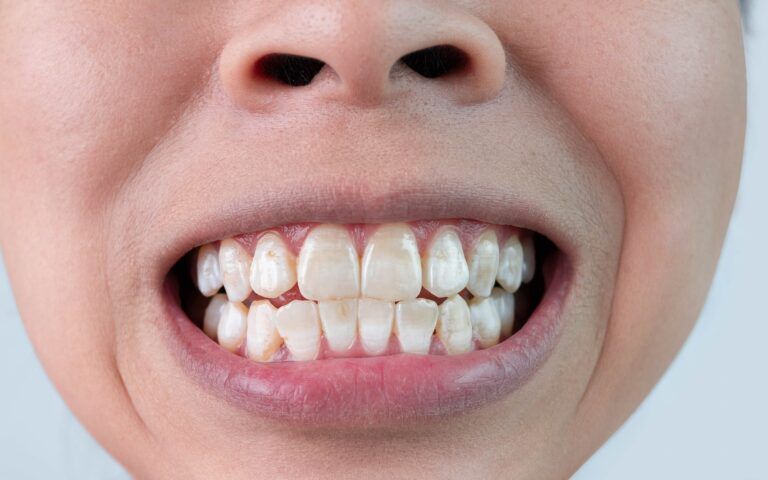Research has shown that straightening your teeth is more than just a vanity procedure. An improved smile can enhance confidence and open doors both socially and economically. There are also oral health risks associated with misaligned teeth, including a greater risk of tooth decay. This is among the reasons why orthodontic treatments, such as braces, are so popular. They are not without their complications, however. Even with proper care, it’s possible that white spots may form on your teeth. Thankfully there are options for removing these discolored areas on your enamel.
How Your Dentist Can White Spot Lesions?
No matter how perfectly straight and healthy your teeth are, a white discoloration on the enamel surface can detract from it. While they are a common outcome of having orthodontic work done, there are ways that these spots can be treated. Let’s begin with talking a bit about where these white spots come from and how they’re related to orthodontic care. White spots:
- Result from loss of minerals from the enamel from acid erosion and sugars.
- Occur in those with braces due to difficulty cleaning around adhesive points
- Do not have to be permanent, provided that effective treatment is provided
- May lead to cavities if left untreated long enough
There are a growing number of treatment methods that have been developed to address white spot lesions. These lesions can be addressed with some at-home treatments, such as using fluoride toothpaste. The fluoride will strengthen the enamel and stimulate remineralization with sufficient time. Dental whitening products can sometimes alter the white spot’s appearance to reduce its overall visibility. Your dentist, however, has a full suite of options that can address these lesions if they prove difficult to address. These treatments include:
- Fluoride Remineralization Treatments: This treatment effectively fast-tracks fluoride to your enamel faster than brushing. This treatment involves the placement of a thin varnish onto your teeth and is a popular preventative in children.
- In-Office Teeth Whitening: If dental whitening is identified as an appropriate way to address your white-spot lesions, in-office treatment can be effective. Your dentist has access to more effective treatments than those available OTC.
- Composite Resin Bonding: When white spot lesions are particularly stubborn, your dentist may opt for a composite resin solution. This is used to correct noticeable gaps in the enamel, provide a protective coating, and can hide the white spot lesion.
- Microabrasion Treatment: This treatment method removes an incredibly thin layer of enamel from the surface of your teeth. This can reduce or eliminate the presence of white spot lesions by removing the damaged enamel. This procedure is often combined with others to achieve the desired results.
- Dental Veneers: When the white spot lesions are particularly severe, your dentist may suggest veneers. These thin layers of porcelain can hide the lesions, address chips and other minor imperfections, and provide a naturally beautiful smile.
These treatments all provide great options for addressing your oral health concerns following orthodontic care.
Speak To Your Dental Provider To Learn More
If you want to know more about white-spot lesions and how your dentist can help you address them, make an appointment today! Bring a list of questions and be prepared for a full oral exam as part of your consultation.

